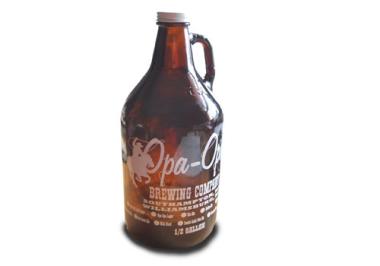Liquors 44 offers a plethora of fine beverage options, but when the young punk with the shaggy beard and ratty sweater took the last growler of India Pale Ale (IPA) from the cooler in the back, I had to leave the store empty-handed. I promptly headed over to State Street Liquors and grabbed two.
There are some damn good beers in the Valley, but I haven't had many of them.
Once a Guinness glutton, I now try only to wet my lip with some shade of IPA. It took me a while to settle on it as my preferred beer. When stout had gotten too sweet, I started trying porters, lagers, pilsners and ales.
For a brief spell before moving to the Valley, my wife and I lived in Ipswich in an apartment above a pizzeria and a hundred determined paces from the local package store. Though we were there only briefly, we developed a firm attachment to the local brewer's growler of pale ale. We called it "beer soda, " not because it tasted like candy, but because of how easy it went down. We were always surprised when we came to the bottom of the half-gallon jug so quickly.
When you buy a six-pack, many times the beer has been conditioned inside the bottle. That means when the cap originally went on, there wasn't much fizz or alcohol in the brew, but over time these things formed as the concoction aged, until such time as you were ready to drink it. Beer that comes in a growler typically comes directly from the brewer's tap, ready to go. Growlers aren't expected to last months, and the beer inside is fresh and often has a far better flavor. Leaving Ipswich, though, we thought we'd left the growlers behind.
After a brief romance with the Northampton Brewery's Northampton Pale Ale, I discovered Dog Fish Head 90 Minute IPA from a Delaware brewer, and it got me excited.
India Pale Ales were created in the 18th century as a way to make a beer that would survive the long, tumultuous journey from England to her colonies in India. The customary porters of the day arrived flat and stale, victims of the long journey, microbiology and the extreme temperatures between the Antarctic and Indian oceans. A brewer named Hodgson discovered that if he created a more alcoholic beer with far more hops than were typically used, the resulting copper-colored drink survived the journey.
The alcohol helped defend against the microorganisms that could spoil the drink, but it was the abundance of hops, chiefly, that did the trick. The hops also defended against spoilage, but more importantly, the bitterness masked any stale flavors that might have developed. It became a tremendous success, and from IPAs, standard pale ales were also derived, such as Bass.
Dog Fish Head was one of the first American microbrewers to revisit the traditional IPA brewing process, and they offer two spectacular varieties: 90 Minute and 120 Minute, the names referring to the length of time they're boiled and their relative intensities. The flavor is sharp and pungent, and it remains a favorite. Soon, however, it was eclipsed by New Hampshire brewer Smuttynose's IPA. Smuttynose's version had a stronger hint of citrus and was a little less brutal in how it laid on the hops.
But both pale in comparison to a growler of Opa Opa's IPA.
The bright, almost orange glow that comes from the brown bottle with the cowboy on it is perfectly balanced and offers a refreshing blast of grapefruit-like flavor along with the smartly bitter hops. Though I'm not typically a beer guzzler, Opa Opa's flavor is so full without being overpowering that it's a beer made for quaffing. A full pungent mouthful revives all the senses and the fizz excites your throat and sinuses until you're ready for your next sip.
I continue to sample different IPAs, and while I find many I enjoy (McNeill's Dead Horse IPA from Brattleboro is another favorite), I always return to the growler.
Opa Opa also sells the beer in longnecks, but the flavor's more murky and less crisp than it is in the growler. The big jug has other substantial advantages, too. Unlike the measly nickel you get back for a defunct beer bottle, there's a hefty $2 dollar deposit on the growler, which can pay dividends. After a week or so of serious quaffing, when the resulting jug collection becomes impressive, just watch the eyes of your companions as you saunter into the redemption center. Since these big boys won't fit in the machines, you can walk to the front of the line, and the clerk is obliged to take them from you directly. While the other consumers of lesser beers need to crunch 20 bottles for a buck in the machines, you walk out a rich man, your hands clean.
And as long as no one has picked the cooler clean before you got there, you'll have enough cash for a "free" additional bottle of this amazing taste experience. Perfection.



